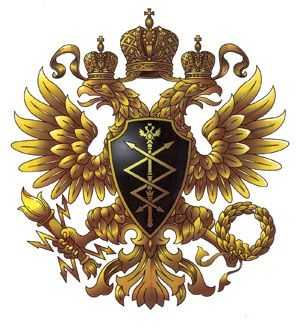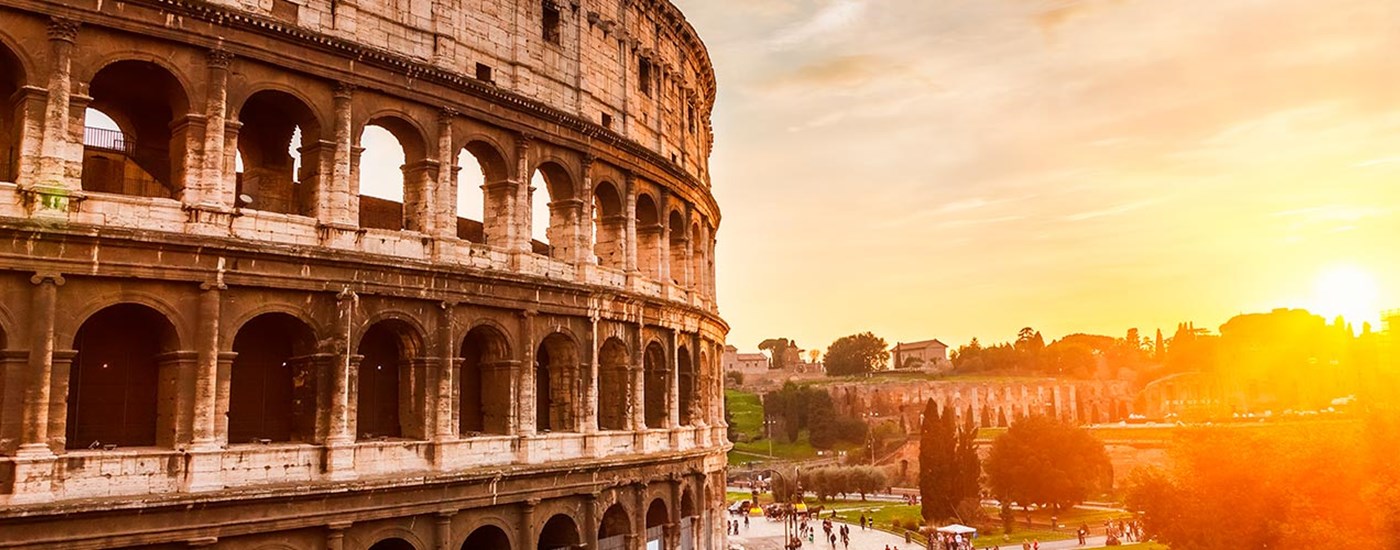Unique Ability
All Roads Lead to Carcino
All cities Carcino founds or conquer start with a Trading Post. If in Trade Route range of Carcino, they also start with a road to it. Carcinian Trade Routes earn +1 Gold for passing through Trading Posts in Carcinian owned cities.
Special Units
Legion
Special Infrastructure
BathHistorical Context
Whether one believes Carcino was founded around 3100 BCE by Rosario and Ricario, by refugees from
Tarrin, or by a motely crew of outcasts who happened to find a nice hilltop with a source of clean water nearby, for a few centuries all roads – as the saying goes – led to it. In time the
patricians found that the
plebeians could be kept inattentive to serious matters with bread and circuses – a truism still – and the Classical Republic became a dictatorship, and later an Empire, and once again a Republic. Carcino laid the foundation of Western civilization, and its traditions (good and bad) live on today.
According to Carcinian belief, the city was founded by twin brothers named Rosario and Ricario, the sons of the god Pelor and a human king’s daughter. The children were abandoned at birth, but they were rescued by a she-bear who suckled them. Upon reaching maturity the boys founded a new city, then quarreled over who would rule (or, as some would have it, the height of a wall). Rosario won; he killed his brother and became the first king of Carcino. This story of abandonment and she-bear and murder may explain quite a bit about Carcino’s subsequent history.
Carcino’s strategic location made it greatly prized by its neighbors; for two centuries the
Anios fought off attacks by the Pisaens and the Dertonas, eventually subjugating both and claiming their culture, religion, technology, wealth and of course land for Carcino, establishing a serviceable template for building their empire.
Carcinian lore states that the last Carcinian king was a brutal tyrant. This villainous king, Paullus Octavius, was overthrown by the citizens after his son raped a virtuous noblewoman. Modern historians believe that the truth is far more prosaic. According to these stuffy academics Carcino was captured by the Pisaens, who ejected the Carcinian king, but external events forced them to vacate the city before they could install their own monarch. Finding that they preferred being kingless, the Carcinians did not recall Paullus to power but instead implemented a republic loosely (emphasis on “loose”) based upon the Cayton model of democracy (not that the Caytons were particularly democratic themselves).
The political structure was convoluted, but went something like this: Carcino was ruled by two consuls. The consuls acted as the city’s chief administrators as well as the military commanders. The consuls were elected annually by the “centuriate assembly” – the Carcinian army. To ensure unity of command in times of great danger a “dictator" could be appointed from the consuls who had complete power. The second power bloc in the Carcinian government was the Senate. The Senate was composed of approximately 450 “virtuous” men drawn from the leading families and 300 men from plebian families. According to theory the Senate was strictly an advisory body, but in fact it held enormous political clout (given that the majority members were all filthy rich), and its “advice” was almost always followed. The Carcinian Republic became the model, for better and worse, for most republics that followed.
During much of its history, the Carcinian Republic was at war with one or more of its neighbors since it was constantly expanding its territory at the expense of other, less efficient kingdoms. Most of these gains were swept away in 930 BCE, when a Cimaric tribe defeated the vaunted Carcinian legions and sacked the city… not the last time a bunch of illiterate barbarians would wander the streets of the City of Gold. It took almost half a century for Carcino to recover from this debacle. By the middle of the 200s BCE, however, Carcino was master of central Terauri, with Anio colonies extending far to the north and south. Further, work was progressing on the incomparable Carcinian road network tying the growing republic together, and Carcino was in the process of constructing its first navy... just in time for most of it to be sent to the bottom of the
Lapsustellean.
As Carcino’s expanse and reputation grew, it inevitably came into conflict with other regional kingdoms also looking to be the biggest bully on the block. One such was Moham, a one-time
Krand colony based on the North Kuluan coast in Puveil. At the time Moham had a mighty maritime empire which covered most of North Kulala west of Ardfast, coastal Pithia and Avilon, and much of Slarici, Togon and Criral. Carcino and Moham fought three
“Punic Wars” (364-246 BCE) to decide who would control the western Lapsustellean. When the dust settled, despite the brilliance of Lucius, courage of the Mohamian seamen and acumen of their politicians, Moham and all its holdings disappeared into the maw of the soon-to-be Carcinian Empire.
Although Carcino continued fighting wars across the Lapsustellean, the first century BC saw tens of thousands of soldiers return as civilians from foreign lands. There was not enough work for the ex-soldiers, especially since Carcino was being flooded with slaves from overseas possessions. To be elected consul, Roman politicians had to appease these ex-soldiers, and Roman politics turned increasingly
populist, with political infighting becoming increasingly bitter. It was clear that control of Carcino would fall to whomever could buy the loyalty of the disaffected army. In 62 BCE three men agreed to share power between them; this “First Triumvirate” consisted of the great Arruns Eurysthanese, the senator Marcus Scaramanga, and an obscure general from a wealthy family named Caesar Heirophant.
These men had the same ability to cooperate and desire to share power as one might expect to find in the average killer shark, and following Scaramanga's death in battle, Heirophant and Eurysthanese were at each other's throats. When Heirophant eventually marched on Carcino with his loyal legions, Eurysthanese and the Senate fled the city; in 49 BCE Heirophant entered into Carcino unopposed. While maintaining the façade that Carcino was a republic, Caesar became a de facto dictator. He gave himself the power to appoint all senators, and he altered the constitution so that the assemblies would vote only on candidates and bills he submitted. In 44 BCE he was assassinated by members of the senate who had had enough of these shenanigans (the fact that the good citizens were scandalized by Caesar’s adulterous affair with that foreign witch
Sati didn’t help Caesar).
Following Caesar's death, his lieutenant Mark Caius allied with Manius Gaius and Caesar's nephew Julian Octavian to defeat Caesar's republican assassins. But in the process Caius took up with Sati and her son by Caesar, who got busy resurrecting the Egyptian empire with his help. Thereafter the members of this “Second Triumvirate” quarreled. That tiff ended with Sati, Caesar’s son, Mark and a lot of others dead and Octavian – now termed “Julianus” – as undisputed permanent dictator, even though the danger to Carcino was long over. While the Carcinian Republic was dead, the Carcinian Empire had just begun and the whole world would “tremble at its power and glory.”
For the next four centuries Carcino would be ruled by the dictators, who took the title “Caesar” to remember from whence their power came. The long list of emperors includes the able (Tiberius, Vespasian, Hadrian), the brilliant (Trajan, Marcus Annius, Constantine), some neither (Otho, Pertinax, Balbinus, and others too numerous to mention), and many downright villainous (Caligula, Nero, Commodus, the list goes on). Some had long reigns – the 48 years of Theodosius II is the record – while other lasted just months (some only days), many dying of lead poisoning on the blades of the Praetorian Guard. The whole mad stew was leavened with revolts, rebellions, uprisings, wars and the ever-present struggle to hold the borders against the barbarian hordes.
Through all this turmoil, the Carcinians did manage to produce some of civilization’s most enduring works. Latin art and literature had finally divested themselves of slavishly copying the Caytons; satire (something the Caytons had no appreciation for) is a Carcinian innovation, and Latin sculpture, frescos and landscape painting (the Carcinians invented the genre) surpassed anything previously seen. Carcinian contributions to architecture include the arch, vault and dome; some of their oldest aqueducts, bridges and buildings still stand. Meanwhile wealthy Carcinians became the world’s first tourists, wandering about
Darkshelf, Cayton and Prisca, marveling at the monuments and ruins but drawing no parallels to their own times. Those who stayed at home were entertained by blood sports in the
Great Coliseum and chariot races in the Circus Maximus; and there were periodically those crucifixions along the Avitian Way to relieve the
ennui.
At the height of its holdings under Trajan, the Empire reached from the
highlands of Tarrin to the Cantabian mountains to the
Tuccia and
Lar. Carcino was itself the world’s largest metropolis, numbered an estimated two million inhabitants, citizens and otherwise. Trade flowed into Carcinian lands from Kulala, Tarrin, the Wild Plains, and far Darkshelf, all of it kept track of with standardized weights and measures and counted up on the Carcinian abacus, perfectly suited for the Carcinian numeral system. In fact, as the Empire progressed, given the Carcinian proclivity for organization, just about everything became standardized.
It was a good time to be Carcinian.
But by the third century CE, things were started to decline. The administration, given the state of communications in that age, grew so unwieldy it could not react to crises. In 285 AD Emperor Diocletian partitioned the sprawling realm into a western half and eastern half, with the east administered from Byzantium, where a “second” emperor was installed to act in the name of the first emperor back in Carcino. The no-nonsense religion of Christianity took hold of Carcino, which had always been accepting of different faiths; Emperor Theodosius I made it the state religion, and intolerance wedged cracks in the social structure wider. Barbarians became more technologically advanced, and nibbled at the edges of Carcinian lands. Then, there was always the possibility that the Carcinians were suffering from lead-poisoning thanks to those wonderful aqueducts.
Whatever the contributing causes, the last years of the Western Empire were marked by inept rulers, usurpations and barbarian incursions into the heart of Carcinian lands. In 410 CE Carcino itself was sacked by the forces of Saukr, an
Admerian king. The Admer overran Kulala, and various provincial Carcinian governors broke away to pursue their own dynastic dreams. Finally, the Admerian Odoacer, who had been a general in Carcinian employ, invaded, deposed
Wal Bene, sent the imperial insignia to Arcadia, and installed himself as the new King of Terauri. The “light of Carcino” had been extinguished, although its shadow still loomed across Adlak and beyond as the banners of the second global empire fell tattered to the ground.
Since the foundation of the Carcinian Empire, its rulers had been monarchs, elected for life by the patrician noblemen who made up the Carcinian Senate. On 18 Desnus 3995 CE,
Elio Ignasio VII ("Elio the Ambitious") was assassinated; with only his severed head being found, and the Amulet and
Shield of Kings missing. Several months later, on 7 Calistril 3996 CE, the Consuls were given royal power yet again by
High Pope Ferruccio Otho IV.












Comments